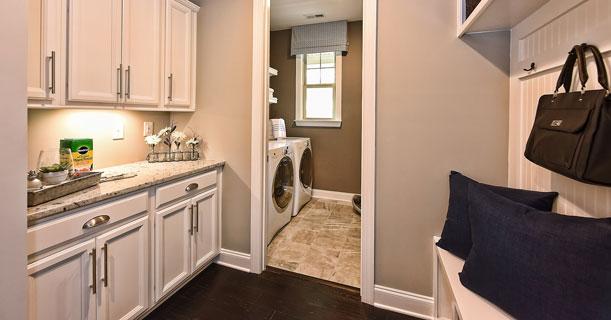Before You Move In: The New Home Walk-Through
Before You Move In: The New Home Walk-Through
Before you go to settlement on your purchase of a newly constructed home, you and your builder will do a walk-through to conduct a final inspection.
This walk-through provides an opportunity to spot items which may need to be corrected or adjusted, learn about the way your new home works, and ask questions about anything you don't understand.
Often the builder will use the walk-through to educate buyers about:
- The operation of the house's components
- The buyer's responsibility for maintenance and upkeep
- Warranty coverage and procedures
- The larger community in which the home is located
Operation of Home Components
When you buy a new appliance or piece of equipment, such as a printer or a washing maching, you usually have to read the instructions before you understand how to use all of the features. With a new house, you will receive a stack of instruction booklets all at once. It helps if someone takes the time to show you how to operate all of the kitchen appliances, heating and cooling systems, water heater, and other features. Such an orientation is particularly useful because people often are so busy during a move that they have trouble finding time to carefully read instruction booklets.
Maintenance Responsibilities
Part of your walk-through will be learning about maintenance and upkeep responsibilities. Most new homes come with a one-year warranty on workmanship and materials. However, such warranties do not cover problems that develop because of failure to perform required maintenance. Many builders provide a booklet explaining common upkeep responsibilities of new home owners and how to perform them.
Should a warranted problem aris afte ryou move in, the builder is likely to have a set of warranty service procedures to follow. Except in emergencies, requests for service should be in writing. This helps to ensure that everyone clearly understands the service to be performed.
Builder Visits During the Year
Many builders schedule two visits during the first year - one near the beginning and the other near the end - to make necessary adjustments and to perform work of a non-emergency nature. Don't expect a builder to rush out immediately for a problem such as a nail pop in your drywall. Such problems occur because of the natural settling of the house and are best addressed in one visit near the end of the first year.
Your Inspection Checklist
Create a checklist when inspecting the house. This list should included everything that needs attention, and you and your builder should agree to a timetable for repairs. Builders prefer to remedy problems before you move in because it is easier to work in an empty house. Some items may have to be corrected after move-in. For instance, if your walk-through is in the winter, your builder may have to delay landscaping adjustments until spring.
It is important that you be thorough and observant during the walk-through. Carefully examine all counter surfaces, fixtures, floors, and walls for possible damage. Sometimes disputes arise because a buyer may discover a gouge in a counter top after move-in, and there is no way to prove whether it was caused by the builder's workers or the buyer's movers. Many builders ask their buyers to sign a form at the walk-through stating that all surfaces have been inspected and that there is no damage other than what has been noted on the walk-through check-list.
Ask a lot of questions during the walk-through and take notes on the answers. Don't worry about asking too many questions. That is how you learn. It is important to view the walk-through as a positive learning experience that will enhance the enjoyment of your new home.


